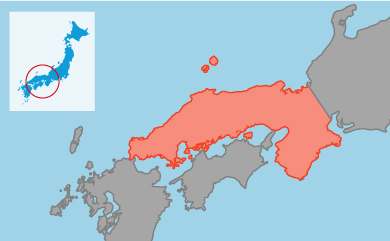
In our delineation of Japan, West Honshu includes Kyoto, one of the most alluring cities in the world; Osaka, from the earliest times a major port and centre of commerce; and Nara, the first great capital of Japan. These three cities are at the nexus of Japanese civilisation, a region where the ancient Yamato people initiated the Japanese Imperial line. Here much of the tumult of the nation’s history was played out and it is also where many of the greatest monuments of Japanese culture are found.
West Honshu also encompasses Hiroshima, a surprisingly vigourous and pleasant city given the devastating event that occurred here; Kobe, a cosmopolitan port city that made a remarkable recovery from its destruction by earthquake in 1995; Himeiji, which is dominated by its spectacular, hill-top castle; Yamaguchi, an elegant, regional town where aristocrats and the literati sought refuge when internecine war wracked Kyoto in the 15th Century and Francis Xavier brought Christianity to in 1550; Izumo, at the very heart of the mythology surrounding the origins of Japan; and Hagi, a picturesque town where many Japanese statesmen and prime ministers were born and raised.
The region is divided by a spine of mountains running west to east. To the north is the rugged coastal Sanin region. Dominated by the colder and often tempestuous Sea of Japan, here the climate is unpredictably tough especially in winter, when snow falls copiously. In stark contrast, one of the calmest and driest climates in all Japan is found to the south in the Sanyo region on the Seto Inland Sea.




